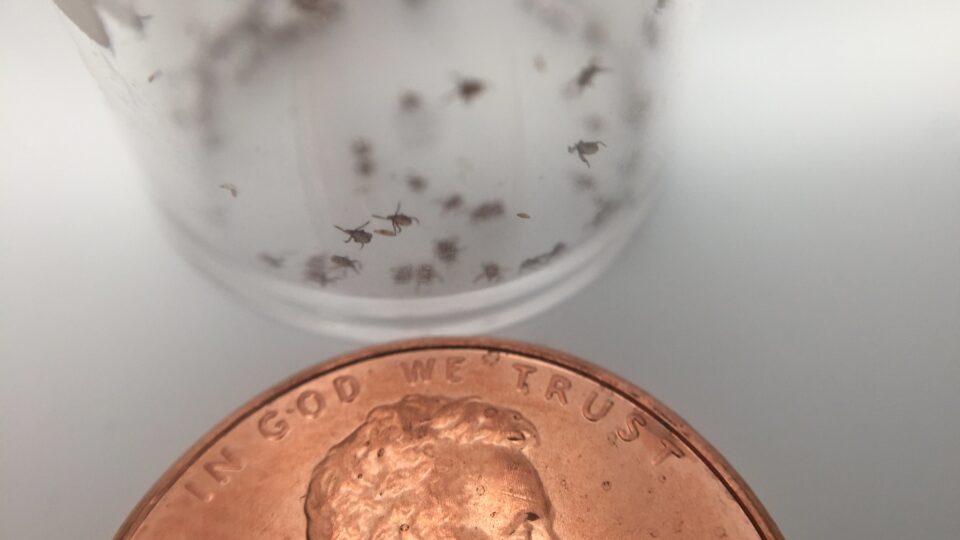Tiny ticks are a big problem. Measuring only three to five millimeters in size, ticks are widely distributed around the world. They are external parasites, feasting on the blood of birds, reptiles, amphibians, and mammals – including humans.
According to estimates from the Centers for Disease Control and Prevention, ticks infect an estimated 476,000 people with Lyme disease in the United States every year. Lyme disease is caused by a bacterium called Borrelia burgdorferi that lurks in wild mice. Ticks that feed on the mice become infected and can then in turn infect people and animals.
The disease is not only a problem in the United States, but in other parts of North America, Europe and Asia as well. It often causes a characteristic “bullseye” rash and flu-like symptoms. If left untreated, it can lead to serious long-term health problems.
Currently, lyme disease is treated using antibiotics. But antibiotics kill a wide range of bacteria – including healthy gut bacteria – which can lead to additional health issues and more antibiotic resistance.
A recent discovery by researchers from Northeastern University in Boston could allow Lyme disease to be eradicated in the wild. The researchers found that a compound called hygromycin A is deadly to the bacterium that causes Lyme disease but harmless to animals and has little effect on most other bacteria.
The little-known antibiotic cleared Lyme disease infection in mice, both when administered via injection and when ingested using bait. As a result, dropping feeding baits could eradicate Lyme disease from whole areas or even entire countries. The first field trial will be next summer.
**********
Web Links
Drug treatment for Lyme disease could lead to its eradication
Photo, posted June 21, 2017, courtesy of NIAID via Flickr.
Earth Wise is a production of WAMC Northeast Public Radio.
